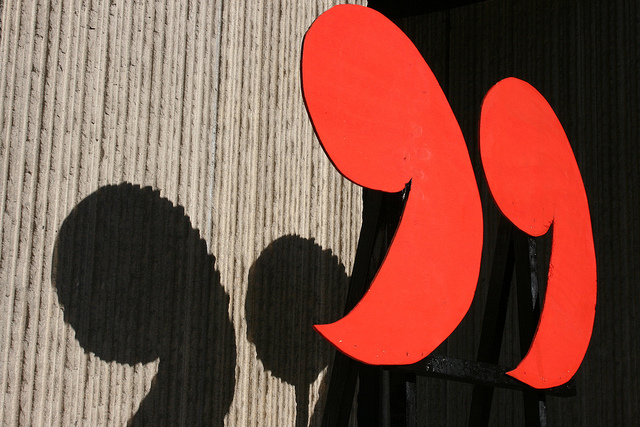Capital letters at the beginnings of words are used in particular circumstances. Many writers are not sure when they should be used, so they either over or under use them. The truth is, this is one of the easiest aspects of writing to learn because the rules are relatively simple and consistent (No rule is totally consistent when it comes to writing or spelling in English).
When to use capital letters at the beginnings of words:
- Always begin a sentence with a capital letter. There are no ifs, ands, or buts about this (By the way, those words, if, and, but, are conjunctions; I’ll explain about them another time).
- Always capitalize the first letter of a proper noun. Okay—that may sound confusing, but it is not. A proper noun is a noun that refers to a specific person, place, thing, or idea. For example, Robert is a proper noun, but man and boy are not. (Nouns that refer to non-specific people, places, things, or ideas are called common nouns.) New York City is a proper noun, but city, town, and municipality are common nouns. Don’t capitalize car or car company, but Cadillac must be capitalized. Capitalize Macy’s, but not department store. Each word of the title The Da Vinci Code should begin with a capital letter, but book and bestseller should not. By the way, here is a related point: notice that I italicized The Da Vinci Code. The titles of full-length books and of newspapers, magazines, and journals should be written in italics or underlined, not enclosed in quotation marks. If, however, I had been referring to the film, and not the book, then I would have written it as follows: “The Da Vinci Code.” Films, television shows, short written works, such as short stories, poems, essays, plays, newspaper, magazine, and journal articles, as well as musical pieces and works of art should be enclosed in quotation marks. Of course, since they are proper nouns, the first letter of each word should be capitalized. The only exception to the capitalization of each of the first letters in a title is that the smaller words in the title, such as in, of, and, the, do not have to be capitalized (unless the word in question is at the beginning of the title, as in The Da Vinci Code). Therefore, the title of the following famous novel may be written in two ways: All Quiet on the Western Front or All Quiet On The Western Front.
- Capitalize the first letter of each word in the title of an academic essay or research paper. You should not use quotation marks or italics or underlining. Here is an example: How The Civil War Started.
- When writing dialogue, the first word in quotation marks should be capitalized, as in the following example: “She seemed to enjoy the party,” her father said. If, however, a section of dialogue is interrupted and then continued, the second part of the quoted section should not begin with a capital letter (unless it is a proper noun). These following two examples will, hopefully, clarify that point: “Even though he tried every possible solution to the problem,” the teacher commented, “he could not figure it out.” “Out of all my friends,” the girl complained, “Mary is the only one who never lets me down.”
- Abbreviations of proper nouns should be capitalized. For example, Mr. Roberts, U.S.A., and C.B.S. You should not capitalize abbreviations of common nouns, such as lb., m.p.h., and min. (for minutes).
- The following use of capital letters does not come up very often: You may capitalize the first letter of a word for emphasis, as in the following sentence:
It is definitely Not true that all Americans were in favor of the Revolutionary War.
Try to remember the six rules stated above. They will help you to write sentences that are truly capital.


